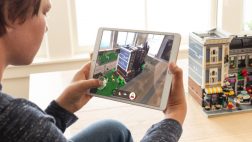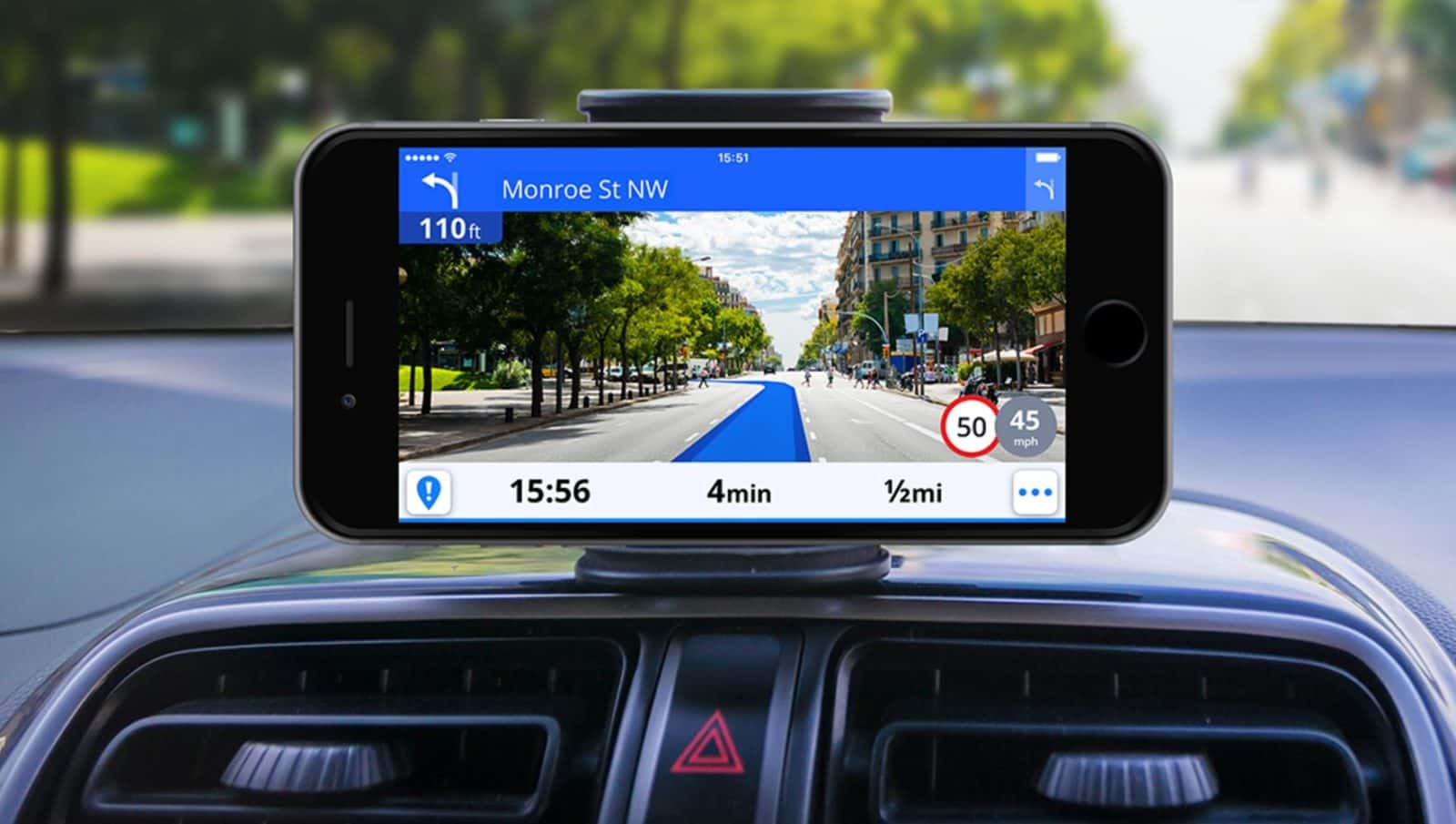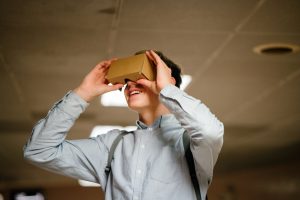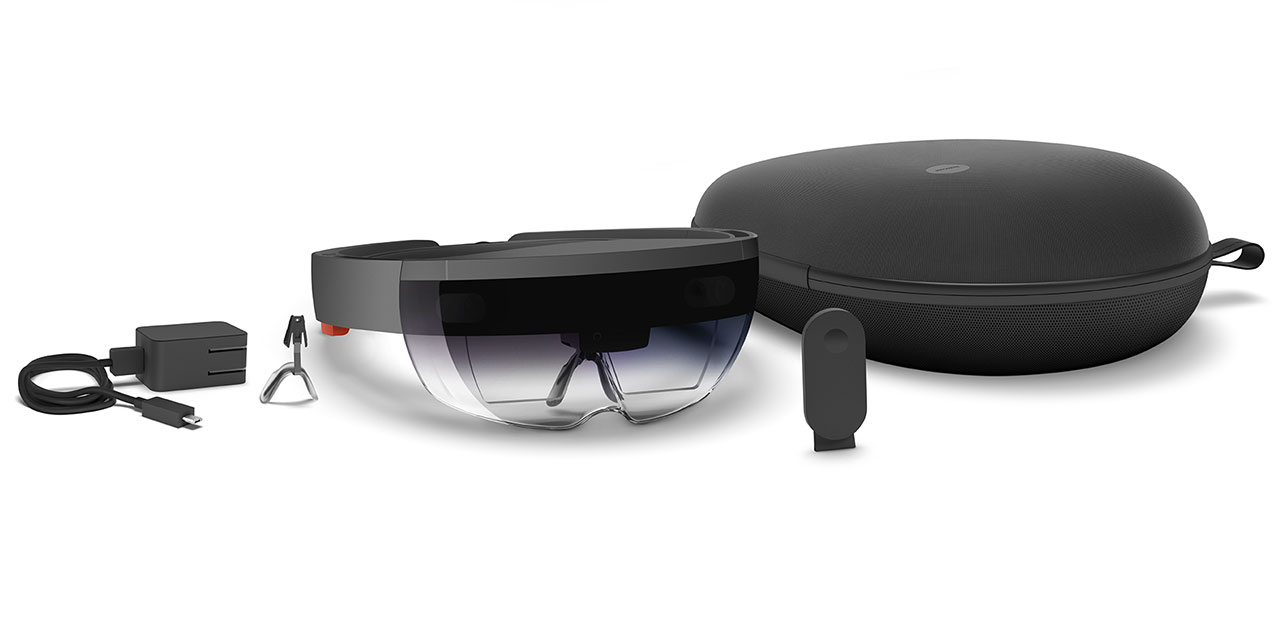Introduction
Augmented Reality (AR) has emerged as an exciting and innovative technology that blends the virtual world with the real world, enhancing our perception and interaction with our surroundings. By overlaying virtual objects, graphics, or information onto our physical environment, AR has the potential to revolutionize various industries, from gaming and entertainment to healthcare and education.
AR has gained significant traction in recent years, captivating both consumers and businesses alike. The seamless integration of virtual elements into our real-world experience has opened up a myriad of possibilities, making AR a powerful tool for communication, visualization, and problem-solving.
With this rise in popularity, the demand for augmented reality experiences has grown exponentially. Consequently, businesses and organizations are increasingly interested in exploring the potential of AR to engage customers, improve productivity, and optimize processes.
However, before diving into the world of AR, it is crucial to understand the intricacies and considerations associated with its development and implementation. One critical aspect that often arises when considering augmented reality is its cost. This encompasses not only the monetary investment required but also the time, resources, and expertise needed to bring an AR project to life.
In this article, we will delve into the various factors that affect the cost of augmented reality development, explore different pricing models, and provide case studies of AR implementation in different industries. By shedding light on these aspects, we aim to provide a comprehensive understanding of the financial implications of augmented reality and empower businesses to make informed decisions regarding their AR initiatives.
What is Augmented Reality?
Augmented Reality (AR) refers to the technology that overlays virtual objects and information onto the real world, enhancing our perception of the environment. Unlike Virtual Reality (VR), which immerses users in a completely virtual world, AR combines the digital and physical realms, adding virtual elements to our real-world surroundings.
AR experiences can be accessed through various devices, including smartphones, tablets, smart glasses, and headsets. By utilizing cameras, sensors, and GPS, these devices track the user’s position and orientation, allowing virtual objects to interact with the physical world and adjust their position accordingly.
The primary goal of AR is to provide users with an enhanced and interactive experience. It enables them to see and interact with virtual objects, graphics, and information in real-time, directly overlaid onto the physical environment. This blending of the virtual and real worlds opens up endless possibilities across industries and applications.
AR can be categorized into two main types: marker-based AR and markerless AR.
Marker-based AR: This type of AR relies on predefined markers or patterns to trigger the display of virtual content. When the device’s camera detects these markers, it overlays the virtual content onto them. This can be seen in applications like AR gaming, where users scan specific QR codes or images to bring virtual characters or objects into the real world.
Markerless AR: Also known as location-based AR, this type of AR utilizes the device’s sensors (such as GPS, accelerometer, and gyroscope) to track the user’s position and orientation. It then superimposes virtual content onto the real world based on this information. Markerless AR is commonly used in navigation apps, where digital directions and information appear directly on the user’s real-time view.
Regardless of the type of AR, the ultimate goal is to provide users with a seamless integration of virtual elements into their real-world environment. Whether it’s for entertainment, education, training, or practical applications, AR has the potential to transform how we interact with the world around us.
Types of Augmented Reality
Augmented Reality (AR) encompasses a wide range of applications and experiences, each offering a unique way to integrate virtual elements into the real world. Let’s explore some of the main types of AR and their distinct characteristics:
- Marker-based AR: This type of AR relies on markers or patterns that are pre-defined and recognized by the AR device. When the camera detects these markers, it superimposes virtual content onto them. Marker-based AR is commonly used in AR gaming, where users scan specific markers or QR codes to bring virtual objects or characters into the real world. This type of AR provides a highly interactive and immersive experience.
- Markerless AR: Also known as location-based AR, markerless AR utilizes the device’s sensors (GPS, accelerometer, gyroscope) to track the user’s position and orientation. Based on this information, virtual content is superimposed onto the real world. Markerless AR is commonly used in navigation apps, where digital directions and information appear directly on the user’s real-time view. This type of AR offers seamless integration with the user’s environment.
- Projection-based AR: Projection-based AR projects virtual content onto real-world surfaces, such as walls, floors, or tabletops, using projectors. The virtual content can be interactive and respond to user input. This type of AR is often utilized in exhibitions, art installations, and interactive displays, providing a unique and dynamic visual experience.
- Superimposition-based AR: Superimposition-based AR overlays virtual objects onto a specific location or object in the real world. The virtual objects are carefully aligned and anchored within the user’s view, creating a realistic and seamless integration. This type of AR is commonly used in industrial applications, such as architecture and design, where virtual objects can be placed and visualized within real-world contexts.
- Recognition-based AR: Recognition-based AR uses computer vision technology to recognize and track specific objects, images, or patterns in the real world. Once identified, the AR device overlays relevant virtual content onto these objects, adding an interactive and informative layer. This type of AR is often employed in marketing and advertising campaigns, allowing users to scan products or images to access additional information or interactive experiences.
These are just a few examples of the various types of augmented reality experiences. Each type offers its own unique benefits and applications, depending on the desired outcome and user interaction. By understanding these different types of AR, businesses and developers can choose the most suitable approach to create engaging and impactful AR experiences.
Benefits of Augmented Reality
Augmented Reality (AR) offers a multitude of benefits across various industries and applications. Let’s explore some of the key advantages of implementing augmented reality technology:
- Enhanced User Experience: AR provides users with a more engaging, interactive, and immersive experience by seamlessly blending virtual elements into their real-world environment. This enhanced experience can captivate users, increase their involvement, and leave a lasting impression.
- Improved Visualization: AR enables users to visualize and interact with virtual objects, data, or information directly overlaid onto their real-world surroundings. This visualization capability is particularly beneficial in fields such as architecture, design, and engineering, where users can visualize and manipulate three-dimensional models within real-world contexts.
- Increased Productivity: AR can enhance productivity by providing real-time information, guidance, or instructions to users. For example, in manufacturing or maintenance settings, workers can wear AR glasses or use AR-enabled devices to receive step-by-step instructions or guidance on complex tasks, reducing errors and improving efficiency.
- Enhanced Training and Education: AR can revolutionize training and education by providing immersive and interactive learning experiences. Students can engage with virtual objects, simulations, or scenarios to gain hands-on experience and practical knowledge. AR also enables trainers and educators to provide real-time feedback and guidance, enhancing the learning process.
- Improved Marketing and Sales: AR offers new and innovative ways to market products or services. Companies can use AR to create interactive and immersive advertising campaigns, allowing customers to visualize and experience products before making a purchase. This can increase customer engagement, boost sales, and provide a competitive edge in the market.
- Streamlined Processes and Efficiencies: AR can streamline various processes by providing users with real-time information and assistance. For example, in logistics and warehousing, AR can guide workers in locating and picking items efficiently. In healthcare, AR can assist surgeons during complex procedures by providing real-time patient data and overlaying vital information on their view.
- Improved Safety and Training: AR can enhance safety in hazardous environments by providing real-time alerts, warnings, or guidance to workers. It can simulate dangerous situations or scenarios for training purposes, allowing individuals to practice and develop their skills in a safe and controlled virtual environment.
- Enhanced Customer Engagement: AR can create unique and memorable customer experiences, leading to increased engagement and brand loyalty. Through interactive AR applications, businesses can entertain, educate, and engage customers in new and exciting ways, forging deeper connections and improving customer satisfaction.
These are just a few of the many benefits that augmented reality brings to the table. As the technology continues to evolve and advance, we can expect to see an even broader range of applications and advantages across industries, making AR an essential tool in various sectors.
Development Cost of Augmented Reality
Developing an augmented reality (AR) application involves various components, each contributing to the overall cost. It is important to consider these factors when budgeting for an AR project. Let’s explore the key elements that influence the development cost of augmented reality:
- Technology and Platform: The choice of technology and platform significantly impacts the development cost. Depending on the complexity of the AR application and the desired user experience, it may require specialized hardware, such as AR glasses or headsets, or it can be developed for more accessible devices like smartphones or tablets. The development cost will vary based on the selected platform and technology.
- Content Creation: Creating high-quality and engaging AR content involves costs associated with designing 3D models, animations, and graphics. The complexity of the content, the number of virtual objects, and the level of detail required can influence the overall development cost. Additionally, if the AR application involves interactive elements or gamification, additional resources will be required for designing and developing those features.
- Integration with Existing Systems: Incorporating AR into an existing system or infrastructure may incur additional costs. This includes integrating the AR application with backend systems, databases, APIs, or external services. Depending on the complexity of the integration, the development cost can vary.
- User Interface and User Experience: Creating an intuitive and user-friendly interface is crucial for AR applications. The design and development of a seamless user interface and interactive user experience can require additional time and resources, impacting the overall development cost.
- Testing and Bug Fixes: Thorough testing is essential to ensure the functionality, stability, and performance of the AR application. The testing phase can involve various devices and platforms, which may increase the development cost. Additionally, bug fixes and updates post-launch may incur additional costs.
- Development Team: The size and expertise of the development team can affect the overall cost of AR development. Rates can vary based on factors such as location, skill level, and experience. Building a team with expertise in AR development, 3D modeling, animation, and UX/UI design will contribute to the overall cost.
- Maintenance and Updates: After launching an AR application, maintenance and regular updates are necessary to ensure compatibility with new devices, operating systems, and to address any issues or bugs that may arise. Allocating resources for ongoing maintenance and updates should be considered as part of the development cost.
It is important to keep in mind that development costs can vary significantly depending on the complexity and scope of the AR application. Simple AR applications with basic features may have a lower development cost, while more complex and customized projects with advanced functionalities will require a larger budget. Working closely with an experienced AR development team and conducting thorough research and planning can help determine an accurate cost estimate for a specific AR project.
Factors Affecting the Cost of Augmented Reality
The cost of developing an augmented reality (AR) application can vary based on several factors. Understanding these factors is crucial when estimating the budget for an AR project. Let’s explore the main factors that influence the cost of augmented reality:
- Scope and Complexity: The scope and complexity of the AR project are significant factors that impact the cost. The more extensive and intricate the features and functionalities, the higher the development cost will be. Complex AR applications that involve advanced interactions, real-time data processing, or integration with external systems will require more time and resources for development.
- Customization and Personalization: Customizing and personalizing the AR experience to meet specific requirements can increase the development cost. Tailoring the application to align with brand guidelines, specific user interactions, or unique visual elements may involve additional effort and resources.
- AR Hardware: The choice of AR hardware can significantly impact the cost of development. Some advanced AR experiences require specialized hardware such as AR glasses or headsets, which can be more expensive to develop for compared to more common devices like smartphones or tablets. The cost may include adapting the application to different hardware specifications and optimizing it for optimal performance.
- Integration with Backend Systems: If the AR application needs to integrate with existing backend systems, databases, or APIs, it can increase the development cost. Ensuring seamless communication and data exchange between the AR application and backend systems may require additional effort and development resources.
- Content Creation: The creation of high-quality AR content, including 3D models, animations, and visual assets, influences the overall development cost. Detailed and complex content may require more time and resources to create compared to simpler content. Additionally, the need for frequent content updates or regular content additions can impact the cost of ongoing maintenance.
- User Experience Design: Designing a seamless and intuitive user experience is crucial in AR applications. Investing in user research, interface design, and user testing can contribute to the overall cost. Incorporating user feedback and iterating on the design during the development process may also impact the timeline and cost of the project.
- Development Timeframe: The desired timeframe for development can influence the cost. Tighter deadlines may require more resources and a larger development team, potentially increasing the cost. Allocating a realistic timeline for development is essential to balance the cost and ensure a successful outcome.
- Maintenance and Updates: Ongoing maintenance, updates, and support for the AR application should be considered in the overall cost. This includes addressing bug fixes, optimizing performance, and ensuring compatibility with new devices or operating system updates in the future. Regular updates and maintenance activities post-launch will require resources and contribute to the overall cost.
Considering these factors and assessing their impact on the development process is crucial in estimating the overall cost of an augmented reality project. Collaborating with an experienced AR development team and conducting thorough planning and research can give a better understanding of the specific cost factors and provide a more accurate budget estimate for an AR application.
Pricing Models for Augmented Reality
When it comes to developing and implementing augmented reality (AR) projects, several pricing models are commonly employed. Each model offers different approaches to determining the cost of AR development and the associated services. Let’s explore some of the main pricing models for augmented reality:
- Fixed Price: The fixed price model involves setting a predetermined price for the entire AR project. Under this model, the development team and the client agree on the scope of work, project requirements, and deliverables upfront. The price remains fixed regardless of any changes or additional features requested during the development process. This model provides clarity on costs from the beginning and is suitable for projects with a well-defined scope.
- Time and Materials: In the time and materials model, the cost is based on the number of hours worked and the materials or resources used during the AR project. This model is flexible and allows for changes and additions to the project scope during development. The client pays for the actual time spent by the development team and any additional resources utilized. The time and materials model is suitable for projects with evolving requirements or unclear scope.
- Retainer: The retainer model involves an ongoing agreement between the client and the development team for a fixed monthly fee or a certain number of hours per month. This model is ideal for long-term projects or when the client requires continuous support, maintenance, and updates for the AR application. The retainer model ensures a dedicated team’s availability and allows for ongoing development and enhancements as needed.
- Revenue Share: The revenue share model involves a partnership between the client and the development team, where the costs of development are covered by sharing a percentage of the revenue or profits generated by the AR application. This model is often utilized in situations where the client may not have the resources to upfront the development costs. The revenue share arrangement ensures that the development team has a vested interest in the success of the AR application.
- Subscription: The subscription model involves charging users a recurring fee or subscription to access and use the AR application. This pricing model is common in AR applications that offer ongoing services or content updates. The subscription model provides a consistent revenue stream for the development team and allows for continued improvement and support for the AR application.
It’s important to carefully consider the nature of the AR project, the client’s requirements, and the anticipated revenue or budget when choosing a pricing model. Projects with a well-defined scope and fixed requirements may benefit from a fixed price or time and materials model, while long-term or ongoing projects may be better suited for a retainer or subscription model. Collaborating with the development team and discussing the specific needs and goals of the AR project will help determine the most appropriate pricing model for a successful and cost-effective development process.
Case Studies: Cost of Augmented Reality in Different Industries
The cost of implementing augmented reality (AR) can vary across different industries based on the specific requirements and complexity of the project. Let’s explore some case studies that highlight the cost of AR implementation in various industries:
1. Retail: In the retail industry, AR has been used to enhance the shopping experience. For example, IKEA’s AR app allows customers to virtually place furniture in their homes before making a purchase. The development cost for such an app can range from $50,000 to over $200,000, depending on the level of customization, integration with existing systems, and the complexity of the user interface.
2. Healthcare: Augmented reality has found applications in healthcare, such as medical training and assistance during surgeries. The cost of developing an AR surgical guidance system can range from $100,000 to $500,000, depending on the complexity of the procedures involved, the level of precision required, and the integration with medical imaging systems.
3. Education: Augmented reality is transforming the way we learn. In the education sector, AR can be used to create interactive and immersive learning experiences. The development cost for an AR-based education app can range from $50,000 to $150,000, depending on factors such as content creation, user interface design, and integration with existing educational systems.
4. Architecture and Real Estate: AR is revolutionizing the way buildings and spaces are designed and visualized. The cost of developing an AR application for architectural visualization can range from $50,000 to $300,000, depending on the level of detail and complexity required, the integration with modeling and rendering software, and the customization options.
5. Entertainment and Gaming: The entertainment and gaming industry has been quick to adopt AR technology. The popular game Pokemon Go showcases the cost of AR implementation, which was estimated to be around $10 million for development and initial marketing. The cost can vary greatly depending on the complexity of the game mechanics, the level of interactivity, and the integration with location and mapping technologies.
6. Training and Simulation: AR offers realistic training and simulation experiences in fields such as aviation, military, and industrial training. The cost of developing an AR-based training application can range from $100,000 to $500,000, depending on factors like the complexity of the simulated environment, the accuracy of the training scenarios, and the integration with hardware devices.
These case studies provide a glimpse into the range of costs associated with implementing augmented reality in different industries. It’s important to note that these cost estimates are approximate and can vary based on project-specific requirements, customization needs, and the chosen development approach. Working closely with experienced AR developers and conducting a thorough assessment of project needs will help determine an accurate cost estimate for a particular industry’s AR implementation.
Conclusion
Augmented Reality (AR) has emerged as a powerful and transformative technology with vast potential across various industries. The development and implementation of AR applications require careful consideration of factors such as technology, content creation, integration, user experience, and ongoing maintenance. Understanding these factors and their impact on the development cost is essential for businesses and organizations considering AR projects.
AR offers numerous benefits, including enhanced user experiences, improved visualization, increased productivity, and enhanced customer engagement. However, the cost of developing AR applications can vary depending on factors such as scope, complexity, customization, hardware requirements, and content creation.
Pricing models, including fixed price, time and materials, retainer, revenue share, and subscription models, provide different approaches to determine the cost of AR development and services. Each model offers its own advantages and suitability based on the project’s nature and requirements.
Case studies across industries demonstrate the diverse range of costs associated with implementing AR. The cost of developing AR applications can vary considerably depending on industry-specific needs, customization, integration, and complexity. Retail, healthcare, education, architecture, entertainment, and training are just a few examples of industries that have seen successful AR implementations at various cost levels.
In conclusion, understanding the cost factors and choosing the appropriate pricing model are crucial for successfully implementing augmented reality projects. Collaborating with experienced AR developers, conducting thorough research, and carefully assessing project requirements will help businesses and organizations navigate the complex landscape of AR development and make informed decisions to achieve their goals.

























